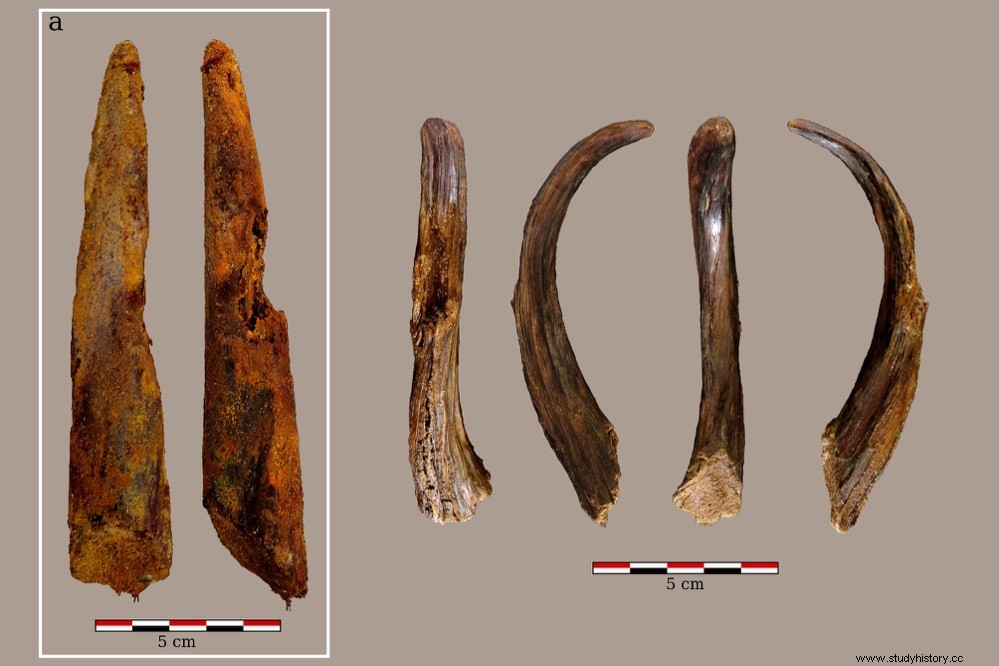An article published in PLOS ONE reveals that the wooden tools found in 2015 in the archaeological excavations of Aranbaltza in the Basque Country are the oldest found used by Neanderthals.
The study, directed by Joseba Ríos-Garaizar, from the National Center for Research on Human Evolution (CENIEH), analyzes two wooden tools that were found in a good state of preservation, one of them 15 centimeters long. Luminescence dating of the sediment in which they were found indicates that they were deposited about 90,000 years ago, and therefore were created by Neanderthals.
His examination revealed that the yew trunk from which they came was cut lengthwise into two halves. One of them was scraped with a stone tool and then treated with fire to harden it and thus obtain the pointed shape.

From the analysis of its wear, archaeologists deduced that it was used to dig for food, flint, or to make holes in the ground.
The conservation of wooden tools of such antiquity is rare, and only in very specific environments, such as the flooded sediments of Aranbalta, has it been possible to find specimens of this type.
Other examples appeared in the Abric Romaní travertine in Catalonia, while in the rest of Europe there are only four more sites with similar finds.
This is one of the rarest examples of deepening the study of Paleolithic wood technology and its relevance to Neanderthal communities, almost always perceived through indirect sources of evidence.

The Aranbaltza site, located in the municipality of Barrika in Vizcaya, is the only open-air site of the Chatelperronian culture in the Iberian Peninsula, and one of the richest in lithic materials. The different strata of occupation date back from around 100,000 years to 40,000 years ago, making their occupants the last Neanderthals in Western Europe, according to the researchers.
Its importance lies in the fact that the Chatelperronian period is very poorly represented in the Iberian Peninsula, with only three cave sites found in the Cantabrian region, two of them in the Basque Country.
Being an open-air site, similar to others around Bayonne or Bergerac in France, it represents a time when life outside caves must have taken on special importance.
Aranbaltza digging stick by JosebaRios on Sketchfab
The Aranbaltza archaeological project began in 2013 and specialists from the CENIEH, INRAP, Ikerbasque, Arkeologi Museoa and the universities of Adelaide, Bordeaux, Burgos, Barcelona and the Basque Country participate in it.
